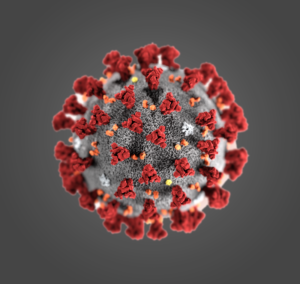
As new strains of the SARS-CoV-2 virus emerge—including variants that appear to make the virus more contagious or potentially more likely to effect the efficacy of the new vaccines—it’s clear that continued genomic surveillance will be essential as we try to rein in the COVID-19 pandemic.
Fortunately, scientists have been using all the tools at their disposal, including SMRT Sequencing platforms from PacBio. In a talk presented at a virtual American Society for Microbiology event in December 2020, Labcorp’s Michael Levandoski spoke about using the Sequel II System for mapping COVID-19 outbreaks by location and over time.
Watch Levandoski’s full presentation:
As a reference lab taking samples from all over the U.S., Labcorp has unique insight into the genetic path of the virus in the world’s largest outbreak. “The samples we collect represent circulating virus in the population,” Levandoski noted, adding that the company has tested more than 3.4 million positive samples as of February 2021. For each sample collected, metadata about timing, location, and patient demographics are recorded to create a truly valuable data set. The company’s large-scale SARS-CoV-2 sequencing project was built on a Sequel II System workflow, analyzing remnants of samples that have tested positive with diagnostic assays.
Of course, that means Labcorp scientists are working with low-input samples, for which they use two pools of overlapping 1.2 kb amplicons to sequence the whole viral genome at a pace of 600 to 1,000 genomes per SMRT Cell using HiFi reads. Levandoski’s team has sequenced more than 17,000 genomes as of February 26, 2021 and reports that HiFi assemblies offer very high resolution without missing any regions, so scientists can identify new mutations with confidence. “We’re able to detect new mutations and variants in the population as they appear,” he said. The team has nearly 20,000 archived samples collected from before March 15th that are in the pipeline for sequencing, and new samples will continue to be sequenced for pathogen surveillance purposes.
With such a small genome, though, is long-read sequencing really necessary? Levandoski thinks so: he told conference attendees that short-read amplicon sequencing could miss new mutations that are key to monitoring transmission and the outcome of vaccinations. By ensuring that all mutations are detected with highly accurate HiFi reads, his team can check each new genetic change to determine whether it’s in a clinically relevant region of the genome.
As a result of this ongoing surveillance work, Labcorp was awarded a sequencing surveillance contract with the US Centers for Disease Control as a part of their efforts to track and learn more about SARS-CoV-2 as it evolves and spreads throughout the country.
Download the Labcorp protocol and learn more about the benefits of using PacBio sequencing for SARS-CoV-2 surveillance.